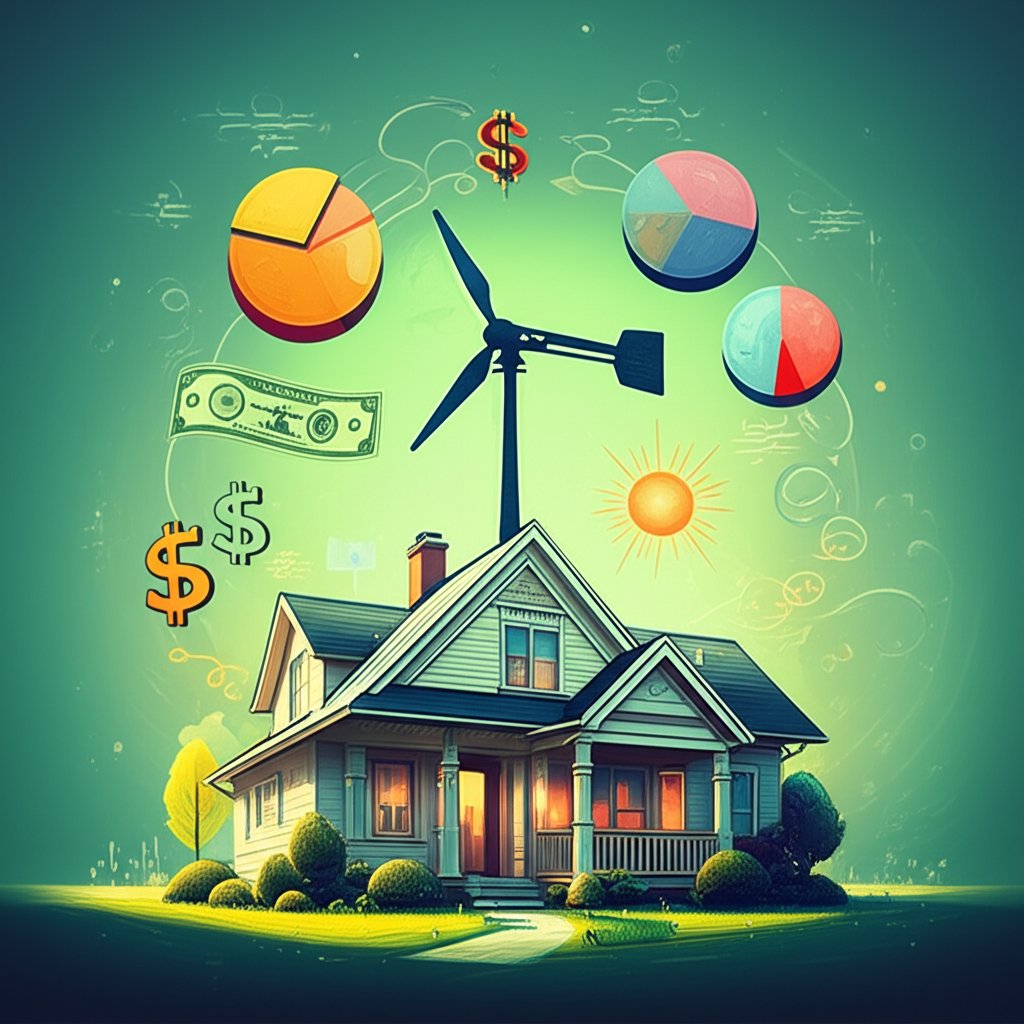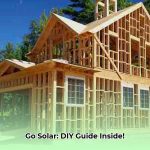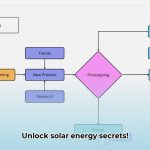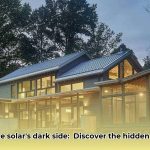Thinking about cutting your electricity bill and shrinking your carbon footprint? Residential wind energy, using small wind turbines to power your home, is an increasingly viable option. But is it right for you?
At a glance:
- Determine if your property has sufficient wind resources for a small turbine.
- Understand the costs and incentives associated with residential wind energy systems.
- Learn how to choose the right turbine size and type for your energy needs.
- Navigate permitting and zoning regulations in your area.
- Estimate the potential energy savings and environmental benefits.
Is Residential Wind Energy Right for You?
Before diving into the details, it’s crucial to evaluate if your property is suitable for residential wind energy. Not all locations are created equal when it comes to wind resources. Factors like average wind speed, turbulence, and obstructions significantly impact a turbine’s performance.
Here’s a quick self-assessment:
- Wind Exposure: Is your property open and exposed to consistent winds, or is it sheltered by trees, buildings, or hills?
- Land Availability: Do you have enough space for a turbine tower and the required safety setbacks?
- Wind Speed: Is the average wind speed at your location at least 9 mph at turbine height? (Use online wind maps or consider a professional wind assessment.)
If you answered “yes” to most of these questions, residential wind energy might be a good fit. If not, don’t despair! There are still steps you can take to improve your property’s suitability or explore alternative renewable energy options.
Understanding the Costs and Savings
Residential wind energy involves a significant upfront investment. However, the long-term savings and environmental benefits can offset the initial costs.
Cost Breakdown:
- Turbine: $3,000 – $8,000 (depending on size and type)
- Tower: $2,000 – $10,000 (depending on height and type)
- Installation: $1,000 – $5,000 (including electrical work)
- Permitting: $500 – $2,000 (depending on local regulations)
Incentives and Rebates: - Federal Tax Credit: Currently, a federal tax credit can cover a significant portion of the system costs (check the latest federal regulations for specific percentages).
- State and Local Incentives: Many states and local governments offer additional rebates, grants, or tax credits to encourage renewable energy adoption.
- Net Metering: Most utilities offer net metering, allowing you to sell excess electricity back to the grid and offset your energy bill.
To get a handle on your potential savings, estimate your annual electricity consumption and compare it to the turbine’s potential energy production. Use online calculators or consult with a wind energy installer for a more accurate assessment. You can find more foundational information about the history behind such important topics through Brush’s wind energy breakthrough.
Example:
Let’s say your home consumes 10,000 kWh per year, and a 5kW turbine produces 7,000 kWh per year in your location. You’ll reduce your grid electricity consumption by 70%, significantly lowering your energy bill. Plus, you might receive credits for selling excess power back to the grid.
Choosing the Right Turbine: Size and Type

Selecting the right turbine is critical for maximizing energy production and minimizing costs. Consider your energy needs, property size, and budget when making your decision.
Turbine Size:
- Small (1-10 kW): Suitable for individual homes or farms.
- Medium (10-100 kW): Ideal for small businesses or communities.
- Large (100 kW+): Used for commercial or utility-scale projects.
For most residential applications, a 1-10 kW turbine is sufficient.
Turbine Type: - Horizontal Axis Wind Turbines (HAWT): The most common type, with blades rotating around a horizontal axis (like a traditional windmill). More efficient but require taller towers.
- Vertical Axis Wind Turbines (VAWT): Blades rotating around a vertical axis. Less efficient but can operate in turbulent winds and are often quieter. They can be located closer to the ground.
Decision Tree:
- Assess energy needs: How much electricity do you use annually?
- Evaluate wind resources: What is the average wind speed at your location?
- Determine turbine size: Choose a turbine that can meet a significant portion of your energy needs.
- Select turbine type: Consider HAWT for efficiency or VAWT for turbulent conditions.
- Get quotes from installers: Compare prices and services.
Navigating Permitting and Zoning
Permitting and zoning regulations can be a significant hurdle in residential wind energy projects. Contact your local planning department to understand the requirements in your area.
Common Requirements:
- Building Permits: Required for turbine towers and electrical connections.
- Zoning Restrictions: Height limits, setback requirements, and noise restrictions.
- Environmental Assessments: May be required if the turbine impacts wildlife or sensitive areas.
- Homeowners Association (HOA) Restrictions: Many HOAs have rules regarding renewable energy installations.
Best Practices: - Start early: Begin the permitting process well in advance of your planned installation.
- Communicate with neighbors: Address any concerns they may have about noise, aesthetics, or safety.
- Hire a qualified installer: They can help you navigate the permitting process and ensure compliance with local regulations.
Calculating the Environmental Benefits

Beyond the financial savings, residential wind energy offers significant environmental benefits. By generating your own clean electricity, you reduce your reliance on fossil fuels and lower your carbon footprint.
Environmental Advantages:
- Reduced Greenhouse Gas Emissions: Wind energy produces no air or water pollution.
- Lower Carbon Footprint: Wind turbines have a relatively small lifecycle carbon footprint compared to fossil fuel power plants.
- Conservation of Natural Resources: Wind energy helps conserve finite resources like coal, oil, and natural gas.
Environmental Impact Calculation:
You can estimate your environmental impact reduction by calculating the amount of CO2 emissions avoided by using wind energy instead of grid electricity. Consult online calculators or resources from environmental organizations for accurate calculations.
Practical Playbook: Getting Started with Residential Wind Energy
Ready to take the next step? Here’s a quick start guide:
- Wind Assessment: Conduct a professional wind assessment or use online wind maps to evaluate your property’s wind resources.
- Energy Audit: Determine your annual electricity consumption and identify opportunities for energy efficiency improvements.
- System Design: Work with a qualified installer to design a wind energy system that meets your needs and complies with local regulations.
- Permitting: Obtain all necessary permits and approvals from your local government.
- Installation: Hire a licensed contractor to install the turbine and connect it to your electrical system.
- Maintenance: Schedule regular maintenance to ensure optimal performance and extend the turbine’s lifespan.
Quick Answers: Common Questions About Residential Wind Energy
Q: How much noise do wind turbines make?
A: Small wind turbines are generally quieter than larger commercial turbines. However, some noise is inevitable. Choose a turbine with noise-reducing features and comply with local noise ordinances.
Q: Are wind turbines dangerous to birds?
A: Bird collisions are a concern with wind turbines, but the risk is lower with smaller turbines and proper siting. Avoid placing turbines in migratory bird pathways or near wildlife habitats.
Q: What happens when the wind doesn’t blow?
A: You’ll still be connected to the grid and can draw power as needed. Net metering allows you to bank excess electricity generated during windy periods for use when the wind is calm. Battery storage can also provide backup power.
Q: How long do wind turbines last?
A: Most residential wind turbines have a lifespan of 20-30 years with proper maintenance.
Q: Can I install a wind turbine myself?
A: While DIY installation is possible, it’s generally recommended to hire a qualified installer. They have the expertise and equipment to ensure safe and reliable installation.
Actionable Close
Residential wind energy offers a compelling path toward energy independence and environmental stewardship. By carefully evaluating your property’s suitability, understanding the costs and benefits, and navigating the permitting process, you can harness the power of the wind to power your home. Don’t wait to explore this renewable energy option and contribute to a more sustainable future.
- Residential Wind Energy: Powering Homes with Small Turbines - November 21, 2025
- How Did Charles F. Brush Discover Wind Energy Tech? - November 19, 2025
- Wind Energy Vertical: Weighing the Pros and Cons of Wind Power - November 16, 2025
















